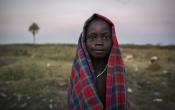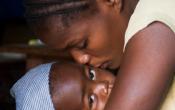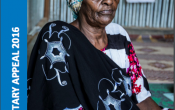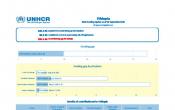Ethiopia
Operation: Ethiopia
Location
{"longitude":40,"latitude":9,"zoom_level":0}
Latest update of camps and office locations 13 Jan 2016. By clicking on the icons on the map, additional information is displayed.
Key Figures
| 2015 end-year results | |
| 0.2 | /1,000/month: the under-5 mortality rate; well within the range of international standards (<1.5/1,000/month) |
| 16.7 | litres of water were made available per refugee/day on average; 6 out of 24 camps met the standard of 20 litres/person/day |
| 9,005 | best interest assessments were conducted |
| 53% | of primary school-aged children were enrolled in primary education |
| 7,863 | transitional shelters were provided |
| 2016 planning figures | |
| 100% | of people of concern registered on an individual basis in Gambella |
| 60% | of school-age children enrolled in primary education in Dollo Ado |
| 95% | of people of concern identified in need of resettlement submitted for resettlement in Jijiga |
| 22 | average number of litres of water available per person per day in Assosa |
Latest Updates and Related Links
People of Concern
11%
Increase in
2015
2015
| 2015 | 739,156 |
| 2014 | 665,240 |
| 2013 | 435,903 |

[["Refugees",736086],["Asylum-seekers",2131],["Returned refugees",5],["Others of concern",934]]
Loading ...
Budgets and Expenditure for Ethiopia
< Back
2015
{"categories":[2012,2013,2014,2015,2016],"budget":[218.65838219,193.15087926,283.71879953,311.641954085,279.32741856],"expenditure":[102.63756841,105.80377323,175.31367849,152.1095677,null]}
{"categories":[2012,2013,2014,2015,2016],"p1":[218.21099923,192.99460025,283.71879953,311.641954085,279.32741856],"p2":[0.36238296,0.15627901,null,null,null],"p3":[null,null,null,null,null],"p4":[0.085,null,null,null,null]}
{"categories":[2012,2013,2014,2015,2016],"p1":[102.57188121,105.7491314,175.31367849,152.1095677,null],"p2":[0.06441077,0.05464183,null,null,null],"p3":[null,null,null,null,null],"p4":[0.00127643,null,null,null,null]}
Loading ...
CHOOSE A YEAR
- 2014
- 2015
- 2016
Working environment
- The Government of Ethiopia maintained its open-door policy and no cases of refoulement were reported; however the country also maintained its reservations to the 1951 Convention regarding the right to work and freedom of movement.
- Ethiopia was hit by a severe drought affecting 80 per cent of refugee-hosting areas.
- The number of unaccompanied and separated children (UASC) from Eritrea and South Sudan continued to increase (over 39,000 UASC as of end 2015).
- The onward movement of mostly Eritrean refugees remained a concern, with 81,000 registered individuals found not to be present in the camps.
- Situations in South Sudan, Sudan, Somalia and Eritrea remained volatile, with few prospects for voluntary repatriation.
Population trends
- The population of concern grew from 662,000 in 2014 to 739,000 in 2015.
- 35,500 Eritrean refugees represented the majority of the new arrivals, followed by 31,000 South Sudanese refugees.
- 5,900 Somalis sought protection in Ethiopia: over 2,500 of them arrived by sea from Yemen, through Somaliland.
- Over 1,000 Sudanese refugees arrived, along with 950 Yemenis.
Achievements and impact
- Three new camps opened to accommodate arrivals from South Sudan and Sudan, and to relocate South Sudanese refugees affected by the 2014 floods in Gambella.
- Primary healthcare services were provided and mortality rates remained within the standard; skilled attendance during delivery increased to 92 per cent.
- Preparations for the introduction of biometrics for food distribution were successfully tested in Pugnido; food distribution monitoring in Shire provided a more accurate number of refugees present in the camps.
- A national education strategy was developed and validated by all partners; overall education enrollment rates increased in 2015 by 16 per cent.
- 5,965 individuals were submitted for resettlement in 2015.
Unmet needs
- Only 40 per cent of refugees had access to assistance in the area of domestic energy.
- Only 7 per cent of the school-aged children were enrolled in secondary education.
- The coverage of transitional or permanent shelter was low, with only 18 per cent of the households living in a transitional or permanent shelter in Samara for example.
- The success of livelihood interventions was limited due partly to restrictions on the refugees’ right to work.
- In terms of Global Acute Malnutrition of children under 5, nine camps were above the emergency threshold of 15 per cent.
Working environment
Owing to its geographical location and to geopolitical developments, Ethiopia is likely to receive more people seeking refuge from neighbouring countries in 2015 and beyond. The Government maintains an open-door-policy and continues to allow humanitarian access and protection to those seeking refuge on its territory.Ethiopia received around 200,000 new arrivals, mostly from South Sudan, between January and August 2014. More than 630,000 refugees are accommodated, mainly in camps, throughout the country. The Government allocated land for the 23 camps around Assosa, Dollo Ado, Gambella, Jijiga, Semera and Shire and provides police presence at those locations.
Since the beginning of 2014, Ethiopia has accepted almost 190,000 refugees who fled conflict in South Sudan. They are mostly women and children, who need protection and assistance and arrive in often alarming nutritional conditions in the Gambella Regional State in western Ethiopia, where infrastructure and services are limited. Large parts of the region are prone to flooding, including the refugee-hosting areas.
UNHCR projects will attempt to address the large number of unaccompanied minors continuously arriving from Eritrea. The high risk of trafficking and smuggling that Eritrean refugees are exposed to remains a concern.
Provisions under Ethiopian law for refugees’ local integration are very limited. While the country maintains reservations to the 1951 Refugee Convention, notably regarding refugees’ employment, it supports an out-of-camp scheme that allows refugees to live outside camps and engage in informal livelihood opportunities.
In addition, students can attend universities, with fees paid for by the Government (75 per cent) and UNHCR (25 per cent).
Needs and strategies
In 2015, UNHCR will continue providing protection and assistance to more than 720,000 people in Ethiopia. In coordination with the Government and partners, the organization will address the needs of populations of concern.It aims to improve services, particularly education and health, in camps opened before 2014, and foster resilience through livelihood activities. Camps opened in 2014 will be fully developed, with adequate services and facilities.
Resettlement remains the most viable durable solution for refugees in Ethiopia but is only available to a small percentage of them; the Office aims to increase both the number of refugees resettled and the number of resettlement countries. At the same time, other solutions are being explored: UNHCR’s out-of-camp policy, for example, will be further implemented and the Office will advocate for naturalization of refugees married to Ethiopian nationals.
Unaccompanied children arriving from Eritrea in high numbers require special care arrangements to ensure their protection from abuse and trafficking – a comprehensive regional project has been developed.
The above-mentioned are the priorities for all refugee groups. The objectives below represent selected examples to highlight some of the activities.






